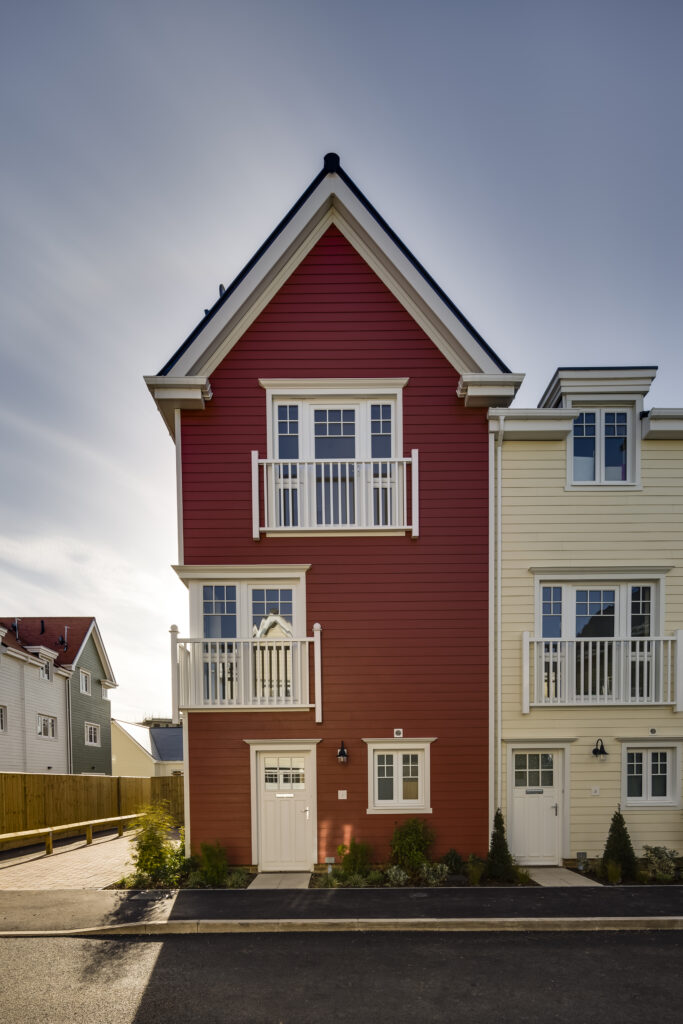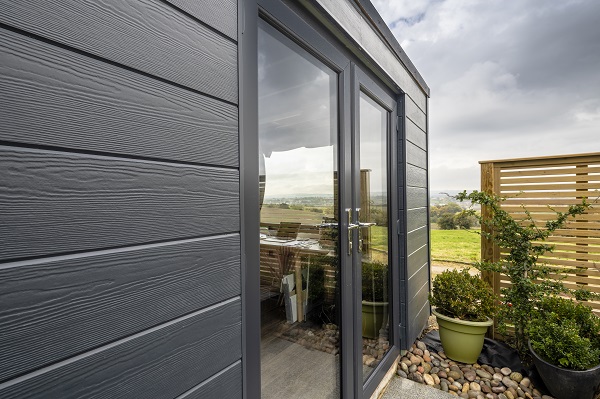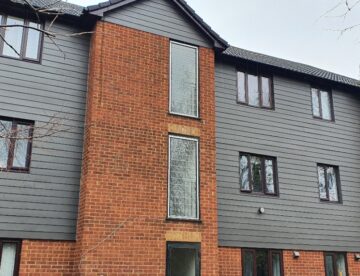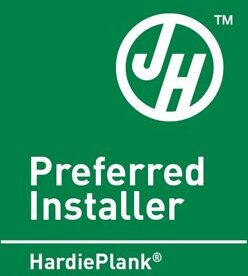Timber cladding and fibre cement cladding
Facade cladding is the final protective layer for your home. There are a wide range of cladding materials on the market, but there are two options that are more popular amongst homeowners: fibre cement cladding and timber cladding. In this article we will discuss the many differences between the two options.
What is timber cladding?
Timber, or wood cladding, is perceived as the most traditional type of external cladding material. Timber cladding is a natural material that is made from different types of timber, like softwood or hardwood timber. Some of the most popular choices of timber cladding in the UK are European redwood, western red cedar, Siberian larch and British larch. Siberian Larch cladding in particular is UKs most popular choice.
Wood cladding/timber cladding vs fibre cement cladding
Both timber cladding and fibre cement cladding are widely used for both residential and commercial buildings, however, due to the product compositions the performance between the two cladding materials varies a lot. The only factor that is similar between the two exterior cladding materials is the installation process, other than that they are two very different materials.
Durability
The durability of fibre cement cladding and timber cladding varies drastically, this is also apparent between different types of wood. For example, if you choose cedar or Siberian larch cladding, these are stronger types of wood and are therefore more durable than other types of timber, but they will also be more expensive.
Even a strong type of timber will be vulnerable to rot and pest infestation without proper maintenance and damaged material will have to be replaced over time. Timber cladding does not withstand weather well and moisture can cause rotting, swelling and shrinkage, which may also cause paint to crack and peel prematurely as wood expands and contracts due to weather changes. European redwood cladding for example, can be affected by unfavourable weather conditions and temperatures, so it should not be used everywhere, depending on environmental conditions.

Fibre cement on the other hand is a very durable cladding material due to the composition of the product. James Hardie fibre cement cladding, such as HardiePlank® weatherboard, have a life expectancy of 60 years and is climate engineered to be water resistant, pest resistant and ability to withstand all weather including high wind loads.

Fire resistance
Wood is a highly flammable cladding material with a fire classification of D-a2, d0. There are fire protective treatments on the market, but they do not have a big difference on the fire classification of timber cladding. Due to the composition of the material timber cladding ignites fast and will produce a lot of heat and smoke.
Fibre cement is a non combustible cladding material that will not ignite when exposed to direct flame or extreme heat. James Hardie cladding products carries a fire classification of A2, s1-d0, which is the highest possible fire rating for a coloured facade board.
You can read more about fire ratings and fire resistance on our Fire resistant cladding page.
Maintenance
With proper maintenance timber cladding can last for many years, but with wooden materials it is important to minimize the exposure to moisture which can cause rot. You will need to maintain a finish coat of paint or stain to seal the wood against the elements. Painted wood needs to be repainted every 5 years and stained wood needs to be re-stained every 3 years.
Depending on what type of wood you use you will also need to use preservatives to protect the cladding, such as termite repellent. Larch, cedar and redwood are stronger types of timber cladding and have a low natural resistance to rot and insects, they are also more expensive types of timber cladding.
Even the strongest timber cladding will need regular maintenance to continue to protect your home and keep paint from cracking or peeling, which will lead to deterioration of the planks underneath.
Fibre cement is a very low maintenance cladding material and only requires a simple wash with a hose and soapy water, when needed. Fibre cement is also termite resistant which further reduces maintenance and repair costs. James Hardie’s fibre cement cladding is delivered with a baked on finish with ColourPlus™ technology, which is fade resistant and does not require regular repainting.
Design flexibility
Timber cladding is seen as the more traditional choice of cladding material. As you have to treat timber cladding you have various choices of colours or stains on the market. But the grain will always be visible on a wooden facade.
Fibre cement cladding comes in a variety of looks and colours. James Hardie offers HardiePlank® weatherboard in 21 colours and two textures, cedar for a more traditional look and smooth for a more modern design. Another one of our options is HardiePlank® VL interlock cladding, which we offer in 6 colours, and is the perfect alternative to traditional shiplap timber cladding.
Cost
Timber is usually seen as a budget choice of exterior cladding. However, if you factor in all costs during the life span of timber cladding, such as maintenance, preservations needed, paint etc. it can end up costing much more than anticipated.

Fibre cement on the other hand, can be a little bit more expensive to buy, depending on what type of timber alternative you would choose, however factoring in the 60 years life expectancy and the extremely low maintenance, the total cost of ownership of fibre cement cladding will nearly always be lower than that of timber cladding.
Why James Hardie fibre cement?
The superior characteristics of our fibre cement products make them the preferred, low maintenance choice of professional builders, architects and homeowners alike. James Hardie fibre cement is thinner and lighter-weight, yet stronger and easier to handle than most alternative building materials, ensuring your build moves along faster – with less hold ups and complications.
- Low maintenance
- Weather resistant – doesn’t shrink, crack or warp
- Fire resistant – non combustible A2 fire rated
- Lightweight for easy installation
- Eco-friendly




